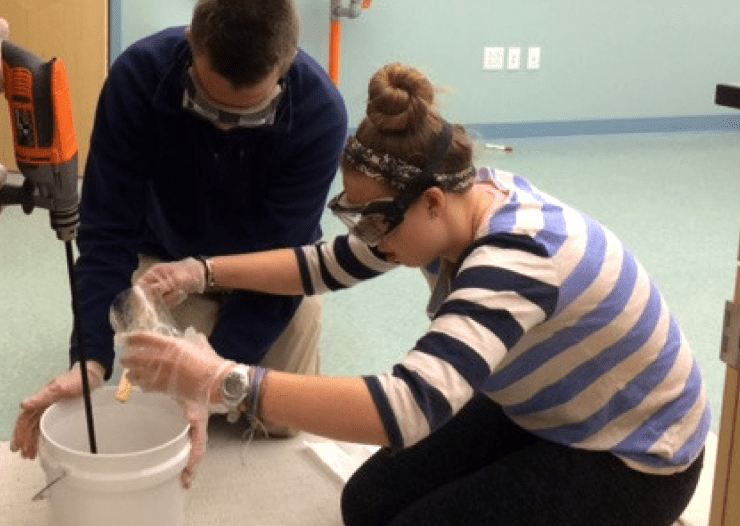- Our School
- Our Advantage
- Admission
- Elementary•Middle School
- High School
- Summer
- Giving
- Parent Resources
- For Educators
- Alumni
« Back
Why We Need More Girls in STEM
September 22nd, 2016

“One of the things that I really strongly believe in is that we need to have more girls interested in math, science, and engineering. We’ve got half the population that is way underrepresented in those fields and that means that we’ve got a whole bunch of talent…not being encouraged the way they need to.”
—President Barack Obama, February 2013
Not every girl in school is interested in STEM, but there’s a new generation of dynamic young girls who will eventually pursue careers in science, technology, engineering, and mathematics.
Developing this interest and talent at a young age is crucial, just as much as instilling confidence and self-awareness. Strides are being made to improve educational opportunities, yet girls are still poorly represented in STEM classes.
This translates into a job market where only 1 in 7 engineers are female, only 27% of all computer science jobs are held by women, and women have seen no employment growth in STEM jobs since 2000, according to Forbes. It’s a lost economic opportunity for women, given that a general engineer makes between $70,000 and $100,00 a year.
Why aren’t more girls interested in STEM subjects? What can be done about it? Let’s take a look.
Introduceat a younger age
Schools that supply STEM programming and encourage elementary- and secondary-school girls to participate can shift the dynamic away from the field being a boys’ club. There are a variety of reasons boys are the main participants in science fairs, and it’s not just because they are the only ones with an interest in science.
Projects involving real-world applications and experiences will also foster a better understanding of what’s out there in the job world. There are many resources available to teachers now to help facilitate the process.
Mentoring opportunities
Exposure to positive female STEM role models at a younger age will have a dramatic impact on whether girls pursue careers in tech, science, and math down the road, according to Karen Horting, CEO and Executive Director at the Society of Women Engineers.
One-on-one mentoring programs and shadowing opportunities are also becoming more prevalent in schools. Groups such as the National Girls Collaborative Project work with public- and private-sector organizations and institutions interested in expanding girls’ participation in STEM.
Students - male and female - want to feel like they belong in whatever setting they’re in. If girls don’t have that sense of belonging, they may choose to drop the science or math class and pursue a different career path.
Bust the stereotypes
Biases still exist that math and science jobs are typically for males, while nursing and secretarial jobs are more geared toward females. Pop culture perpetuates the stereotypes with “nerdy” male computer programmers. Girls now are at least seeing more women portraying doctors, lawyers, and top government officials on the big and small screen.
The paucity of women is not only a social issue. It has economic repercussions as well. There will be 8 million STEM-related jobs in the U.S. by 2018 - jobs that we will not be able to fill domestically unless we can produce more STEM graduates, according to a George Washington University webinar discussing America’s STEM crisis.
Forty percent of today’s jobs require STEM competencies and almost all of the 30 fastest-growing jobs over the next decade will require these skills, but presently only a quarter of women are represented in these fields. The next generation of scientists and engineers need to include a wider range of talent, including more women and minorities.
About the Author:

Melissa Davidson is a full-time freelance writer with a B.A. in Journalism from the the University of Montana. In a former life, she was a newspaper reporter for several publications throughout the west. When she's not hovering over a keyboard writing about health, wellness, and social issues, she can be found riding and running on mountain trails with her dog, Romeo, in full pursuit.
Posted in the category Learning.




















